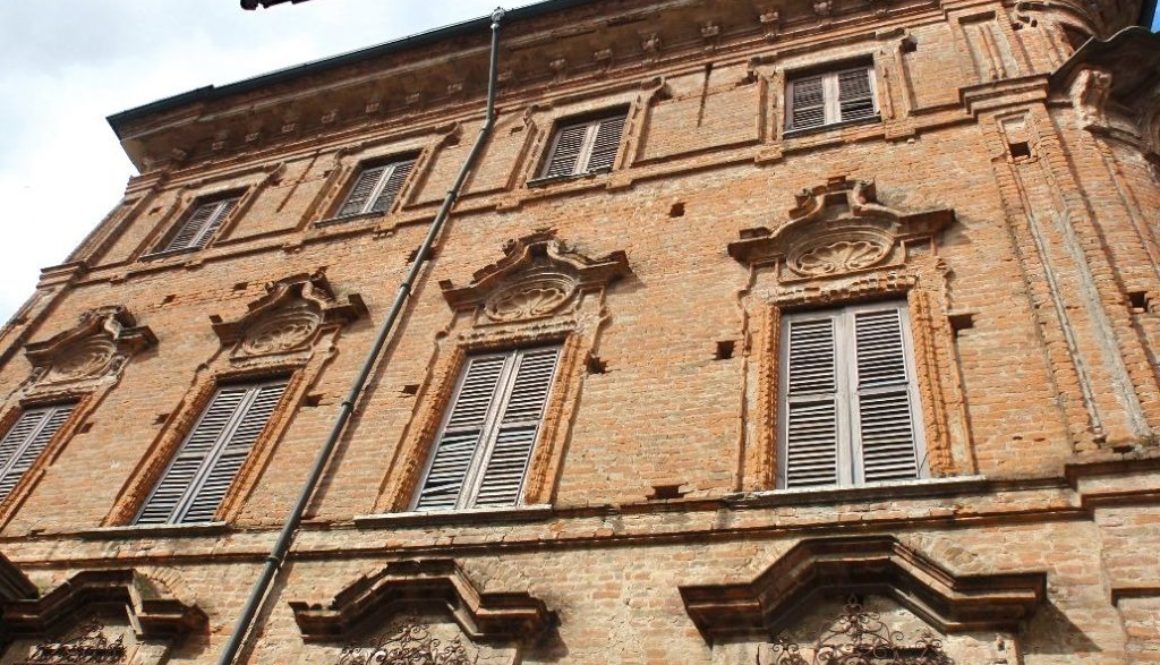Crema, a terracotta gem
Sometimes you visit a town or city and find yourself wondering why it isn’t more widely included in travel itineraries and guides. One such destination is Crema in Lombardy.
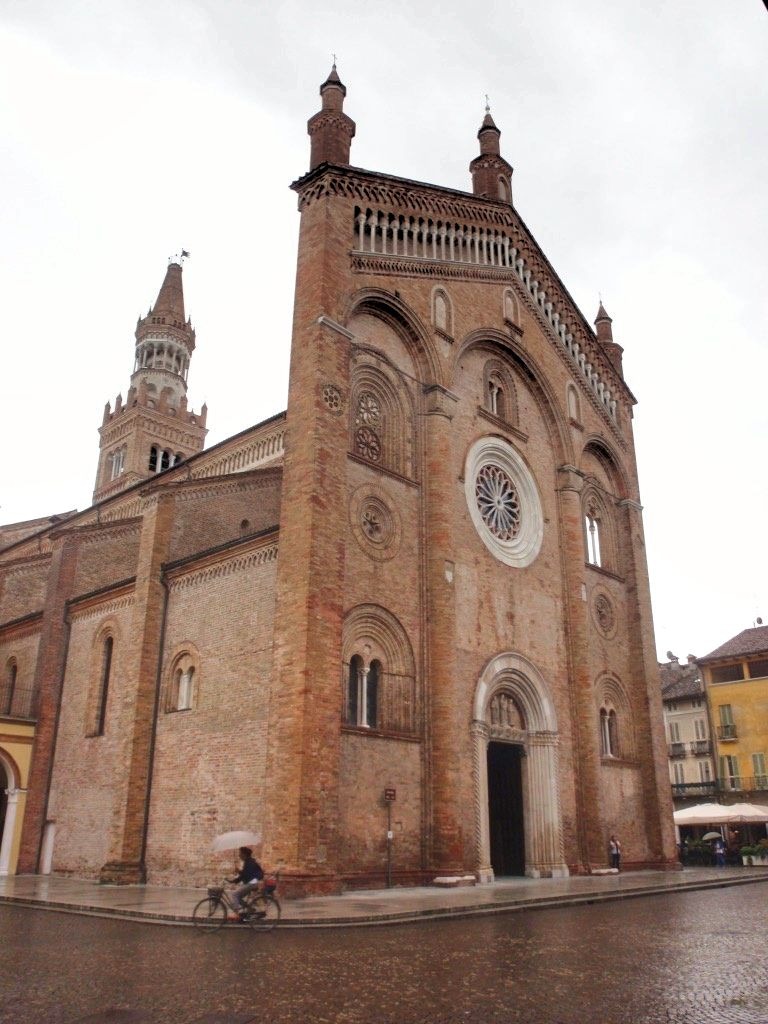
I visited Crema in August 2018 and stayed for two nights. I was looking for somewhere to stay between Milan and Florence and came across Crema by chance. About the same time, I happened to see the film Call Me By Your Name and loved the terracotta architecture of the town featured in the movie. I was pleased to discover that the town and countryside were in and around Crema.
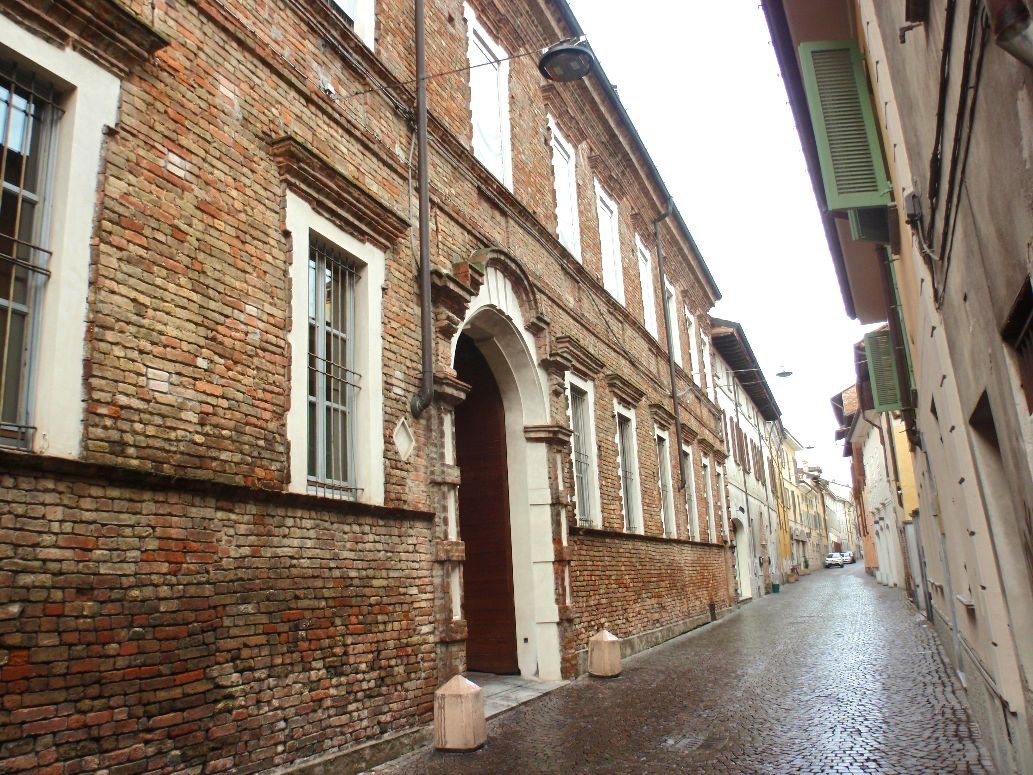
Built along the River Serio, Crema is a city and comune in the province of Cremona in Lombardy. Crema was once part of the Republic of Venice. Crema is not too far from Milan. Travelling by train from Milano Centrale does requires one change at Treviglio for the Crema train.
I arrived in Crema on the last Friday of August. Walking from the train station to my accommodation, B&B Delle Arti, took around 20 minutes. As I got closer to the B&B, I could not help but notice that the grey clouds were black and stormy. They had looked less menacing when I got off the plane at Milano Malpensa. Luckily, I made it to the B&B in time and checked in. Luckily, I made it to the B&B in time and checked in.
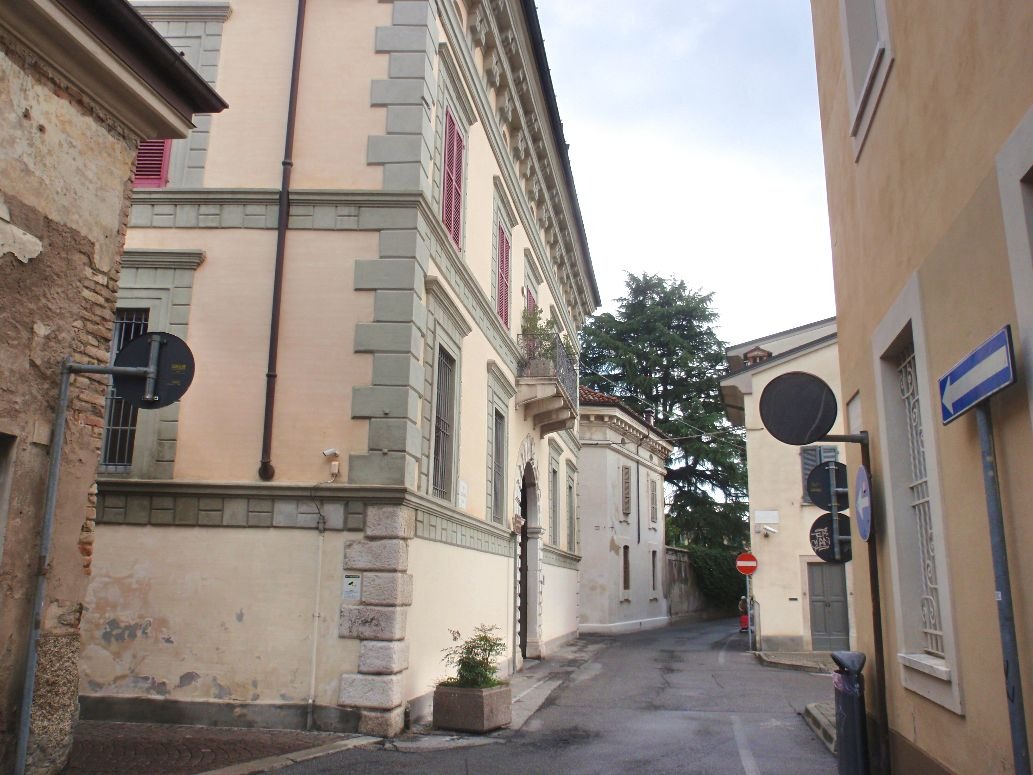
The B&B Delle Arti was a perfect find, being only a ten-minute walk from the centro storico (historic centre). The bed was extremely comfortable, and the shower was beautiful and hot. They provide a continental breakfast. The actual B&B is in a residential building. With the rain all but stopping, I could return to the Centro Storico and start taking some photos and go in search of an aperitivo (pre-dinner drink and snack).
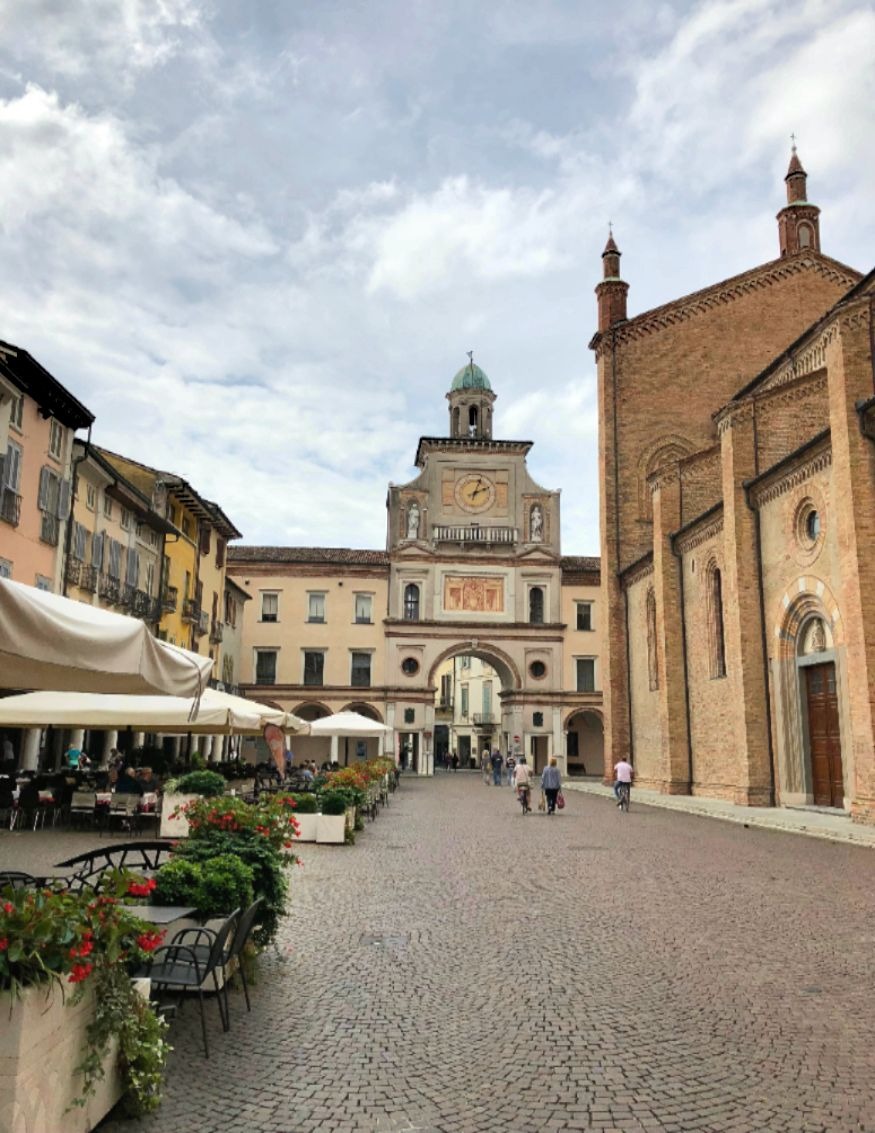
In the Piazza Duomo are some great bars and restaurants. I went into Caffè Marini Coktails and Food and opted for an Aperol Spritz. Nicely settled in I started to think about food.
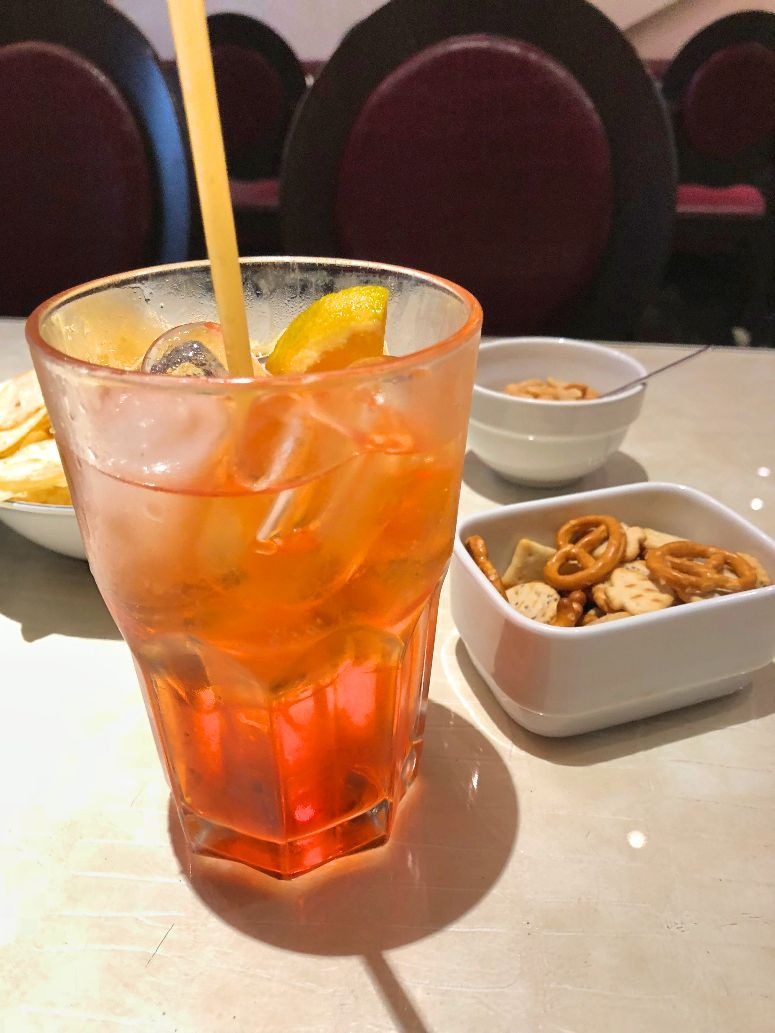
Once again rain was threatening so reluctantly, I went in search somewhere closer to my B&B. By chance, I spotted Ristorante Speranza Pizzeria down a cobbled side street. I had a great meal there and ordered a mixed salad for a starter (antipasti) followed by a bowl of linguine with salmon in a creamed sauce for my main. With my dinner, I enjoyed a couple of glasses of Sangiovese from Emilia-Romagna.
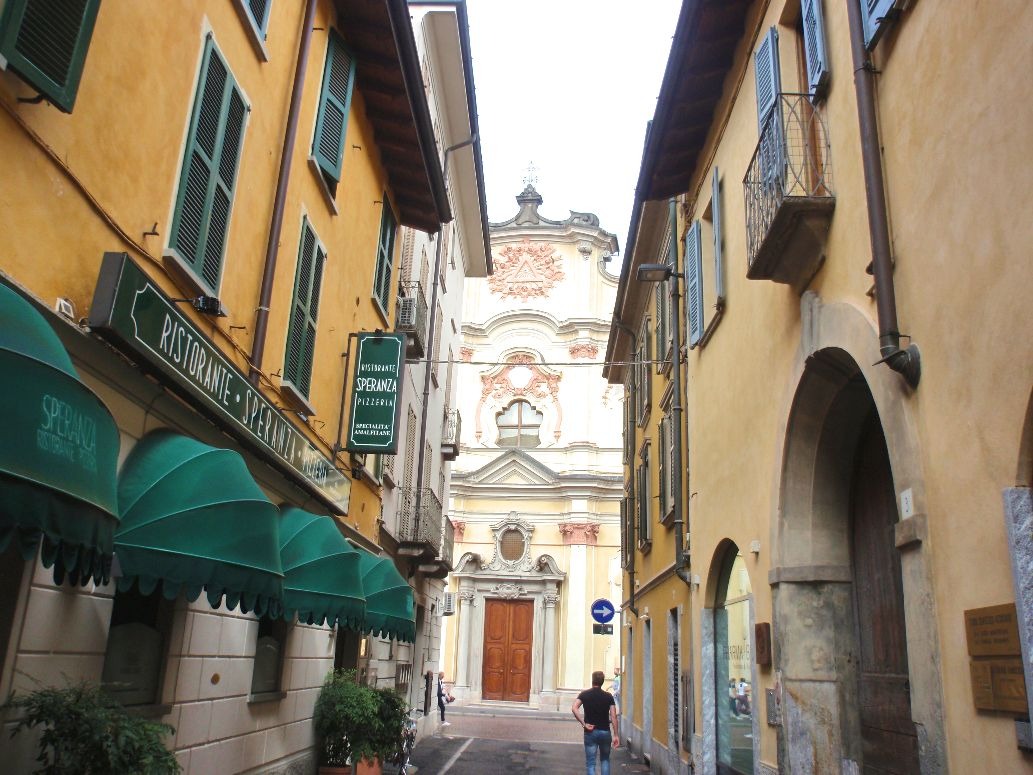
After a continental breakfast the next morning, I walked back into town to explore Crema. Approaching the centre from a different direction, I made my way towards the Venetian gates and walls. Dating back to the fifteenth century the walls did at one time encircle the once Venetian city. Only a few parts of the structure do remain after being demolished in the nineteenth century.
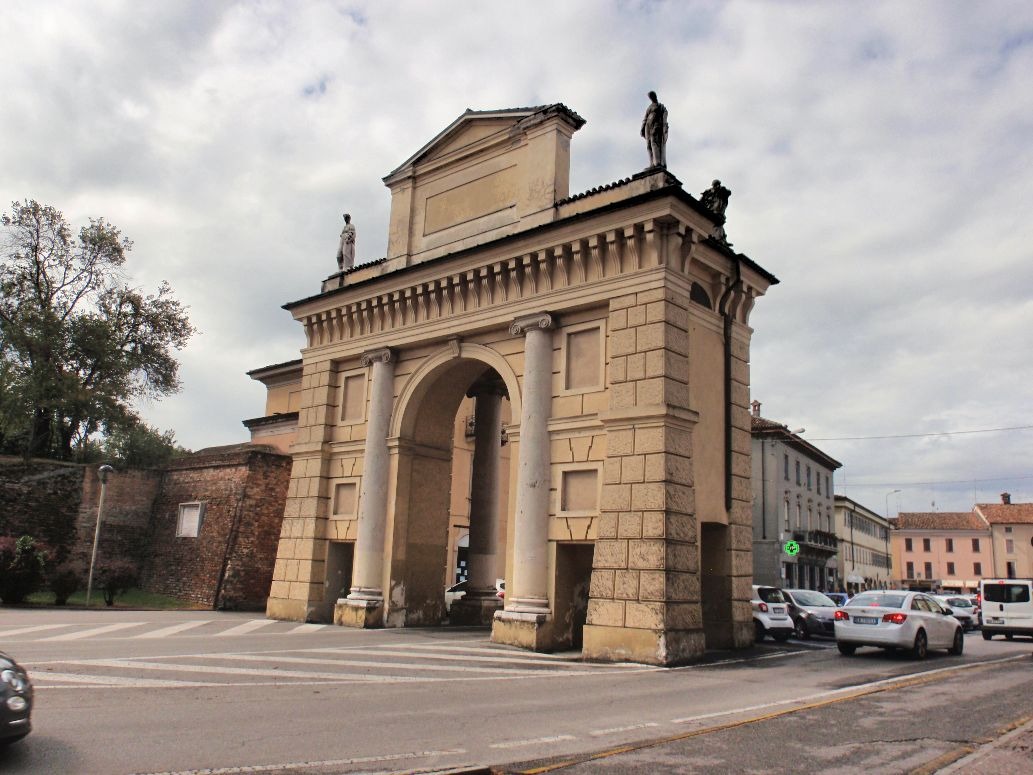
Two gates do prevail, Porta Serio (above) and Porta Ombriano. The gates were designed by the Cremona architect, Faustino Rodi in the early 1800s.
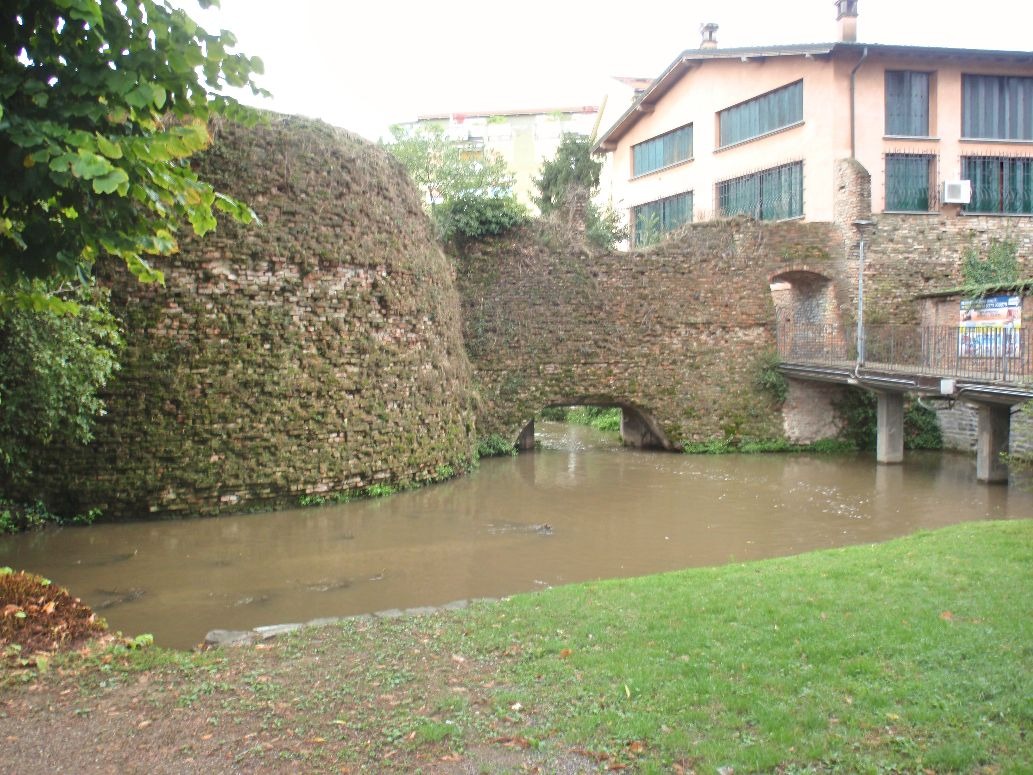
I made my way back towards Piazza Duomo. The Duomo was built in the Lombard Gothic style between 1284-1341 over a pre-existing Romanesque cathedral. The original cathedral being damaged by the siege of Barbarossa in 1160. Parts of the Romanesque cathedral are evident in the crypt.
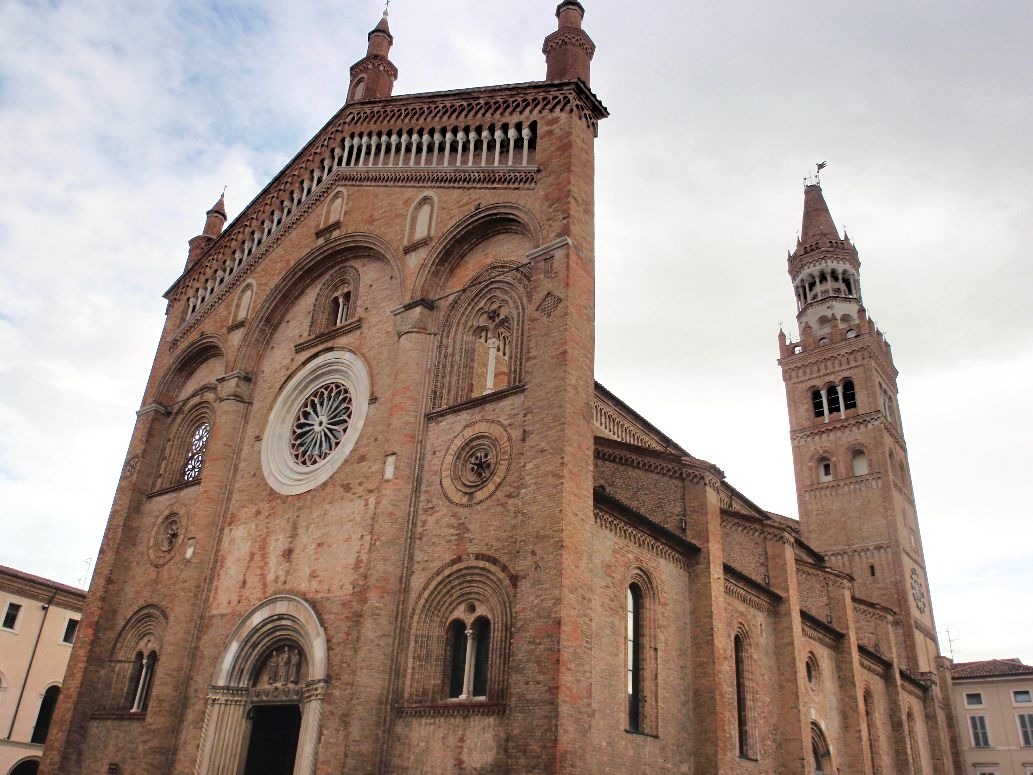
While looking around the Duomo, I was fortunate enough to be accosted by a local unofficial guide (free) who would not take no for an answer. He was very knowledgeable and was keen to practice his English. Nothing wrong with that. The trouble was though when he got to a particularly bloody and gory part of the siege of Barbarossa, he would start speaking more quickly and with his voice raised. Without making eye contact beyond what I had to, I managed to make my excuses.
After my escape, I spent some time in the Piazza Duomo taking photos of the Duomo with its beautiful terracotta front façade from every conceivable angle.
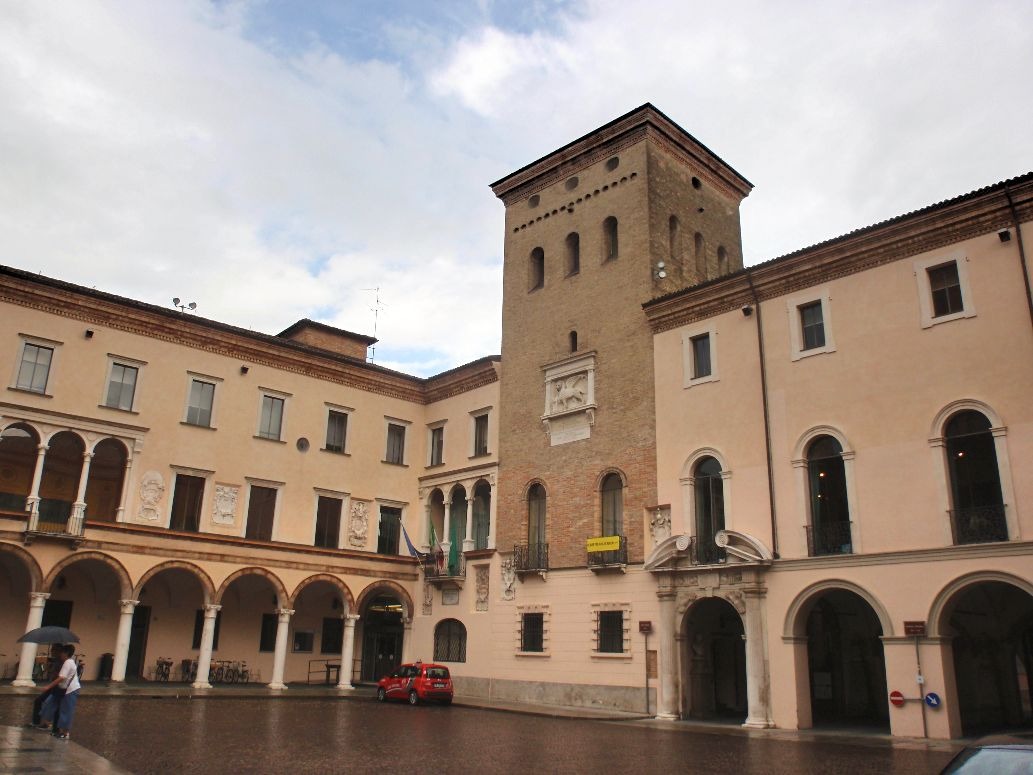
Adjacent to the Duomo is two palazzi (palaces) dating back to the period when Crema was part of the Venetian Republic, the Palazzo Communale (with Torre Guelfa) and Palazzo Pretorio. Built from 1525, The palazzi, built from 1525, are a fusion of Lombard and Venetian architecture. The symbol of Venice, the Lion of San Marco, is attached to the Torre Guelfa. The Palazzo Pretorio housed the new council chamber, as well as being the podestà’s (high official) residence.
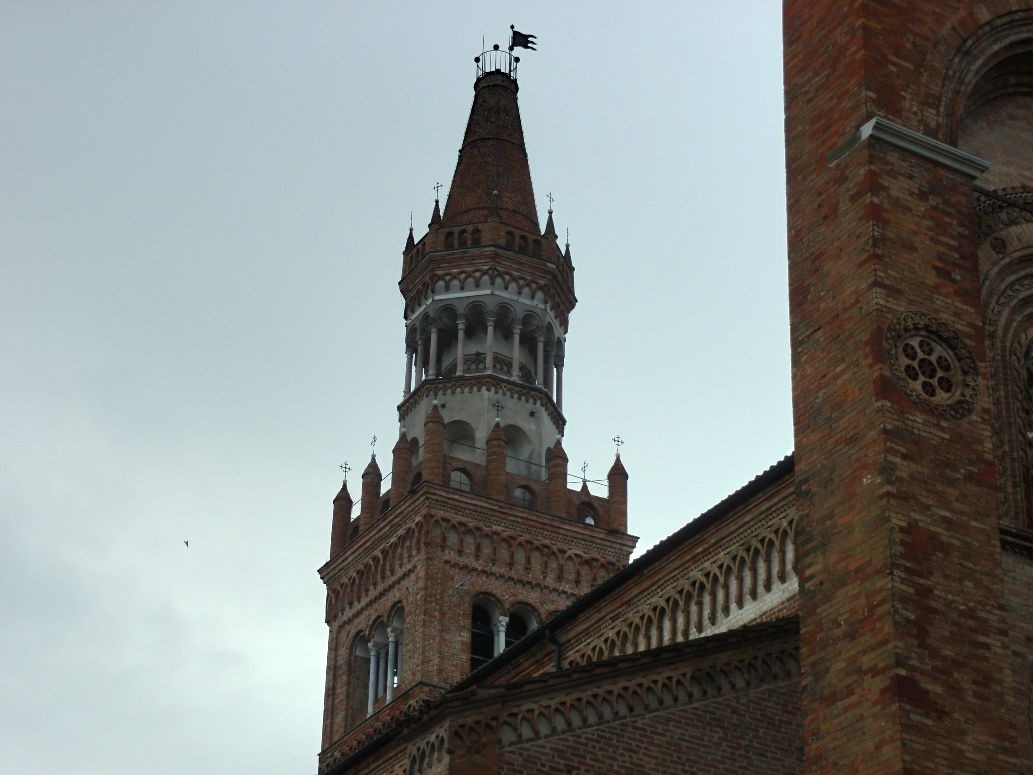
Being a Saturday, the town market was happening. Leaving Piazza del Duomo behind I went in search of the markets. They are located in Via Verdi, about a five-minute walk from the Duomo. After a quick coffee and a taste of some biscotti, I headed back towards Piazza del Duomo in the direction of the long pedestrianised shopping street, Via Alessandro Manzoni.
Not far from where this road ends, I found another church to visit, Chiesa di San Benedetto, built in the Baroque style in the seventeenth century. The church incorporated an ancient abbey (1097) annexed to a monastery of the same name. Elements of the abbey cloisters are visible in the winter chapel.
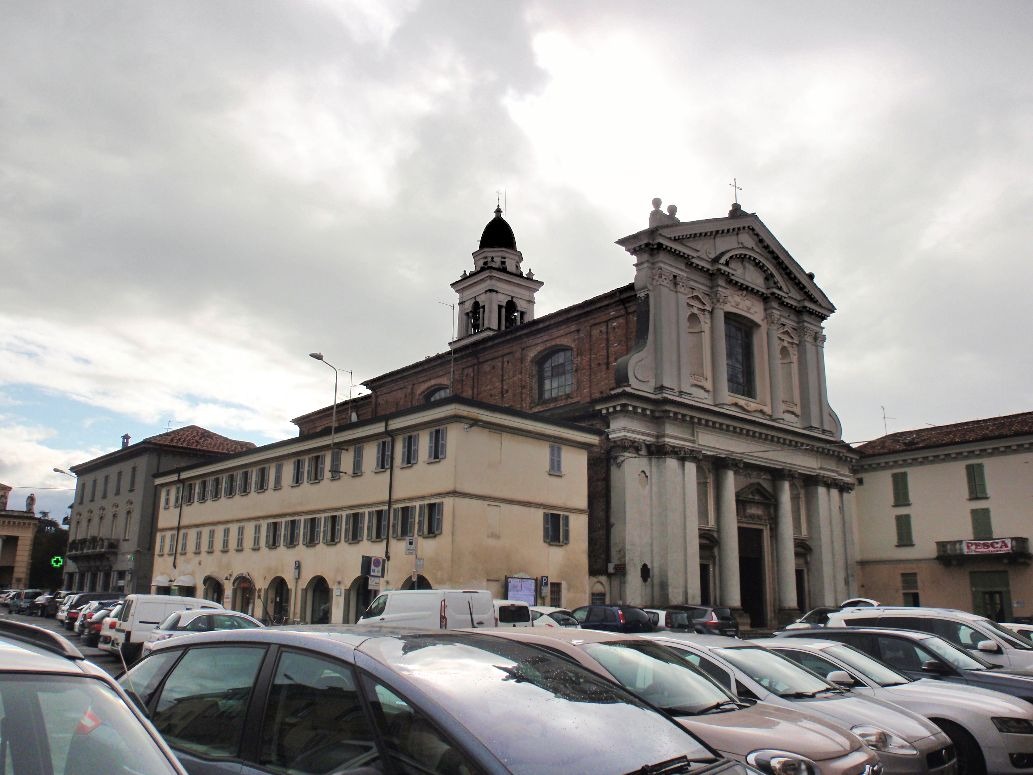
Walking back towards the centre via the streets adjacent to the pedestrianised street, I came across the Teatro San Domenico. The theatre is in a former Renaissance Dominican complex. Completely restored, the Renaissance church was a reconfiguration of an original 14th-century church dedicated to a different saint, San Pietro Martire. In the same Piazza is a nineteenth-century loggia built-in 1842 to house the linen and grains market. Today instead, there is a lounge bar.
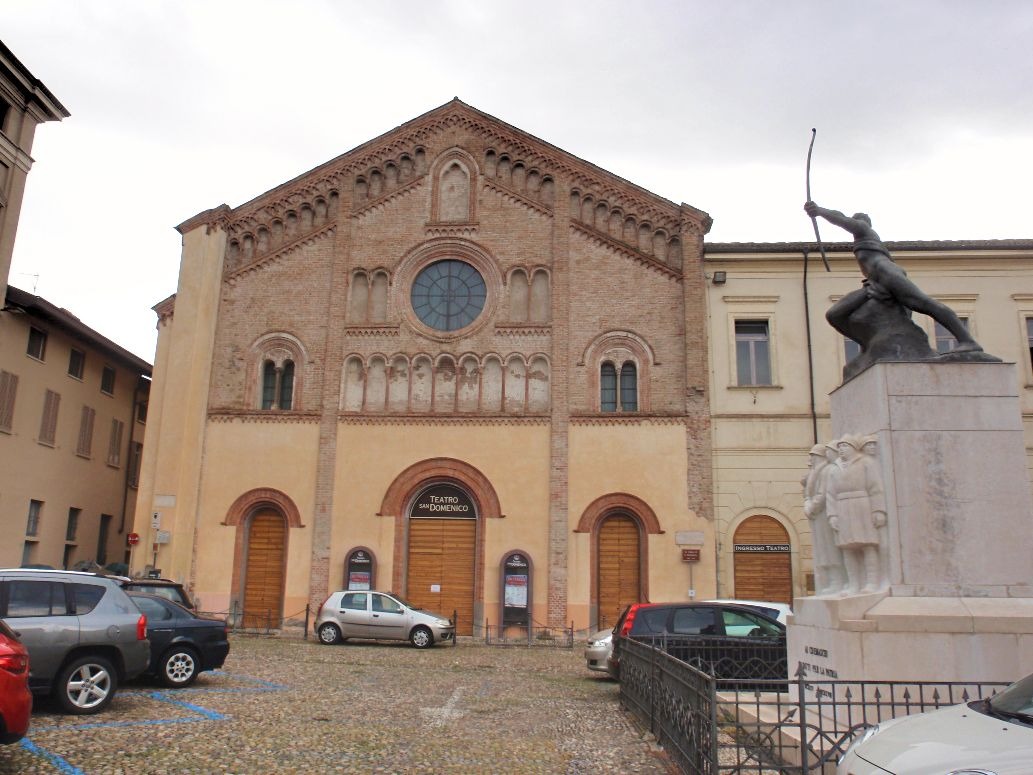
Retracing my steps back towards the Duomo, I went in search of a restaurant I had spotted the night before – Quin Trattoria. Here I sampled the local pasta, Tortellini Cremaschi. The filling interestingly was fruit and is served with butter, sage, and cinnamon rather than the usual broth. It tasted great. The wine of choice was Lambrusco.
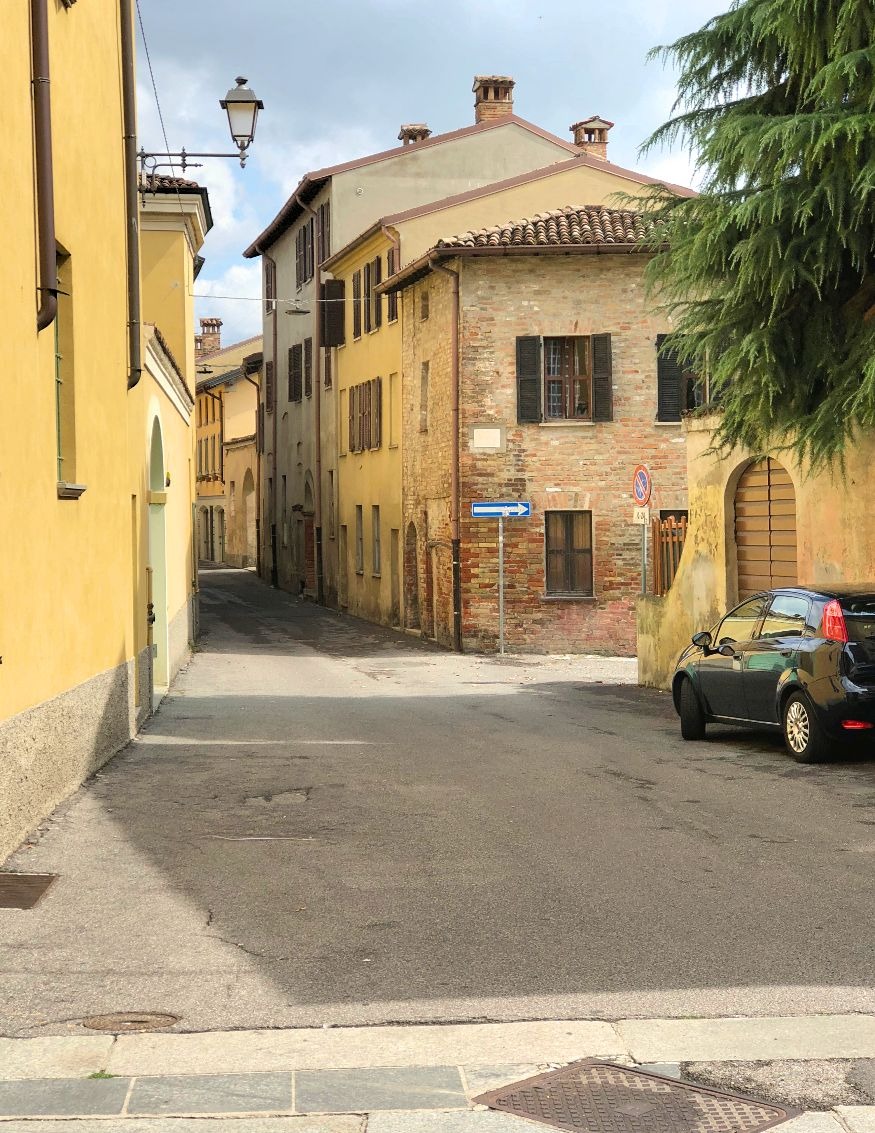
Returning to the streets near the Teatro San Domenico I went in search of the Museo di Civico on Via Dante Alberghi. The museum is in the former convent of Sant’ Agostino, built from 1439 in the Renaissance style.
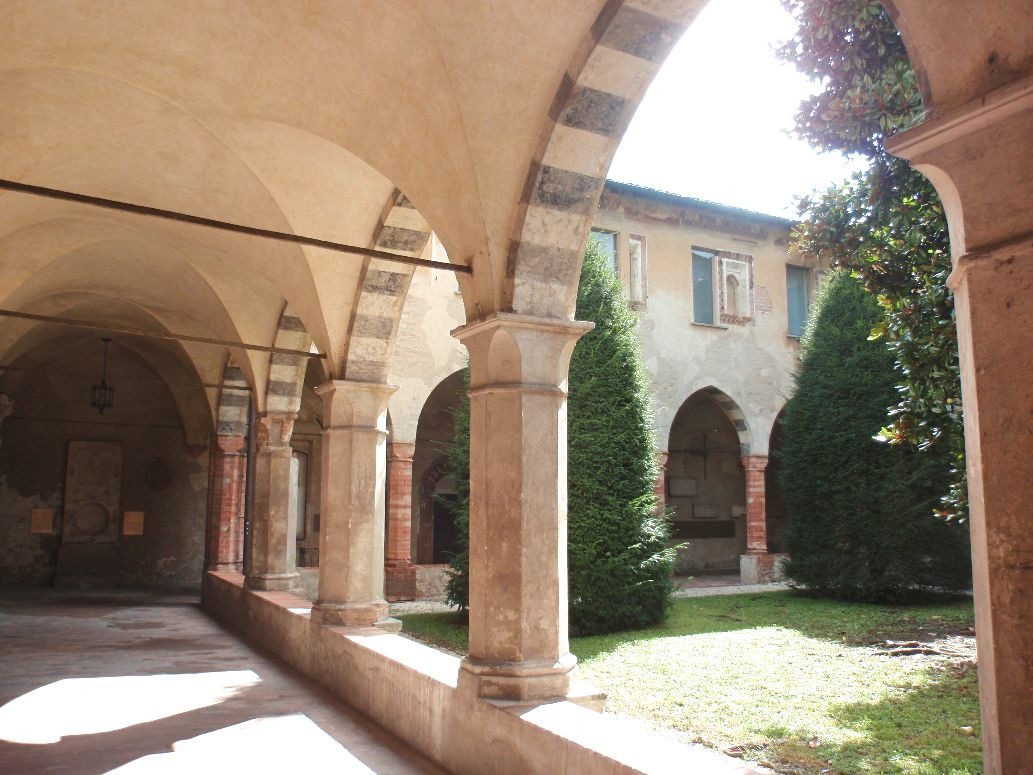
Look out for the well preserved two cloisters with octagonal brick pillars. Also, the frescoed refectory; in particular the painter Giovan Petro da Cemmo’ version of Da Vinci’s The Last Supper. The museum is well worth a visit.
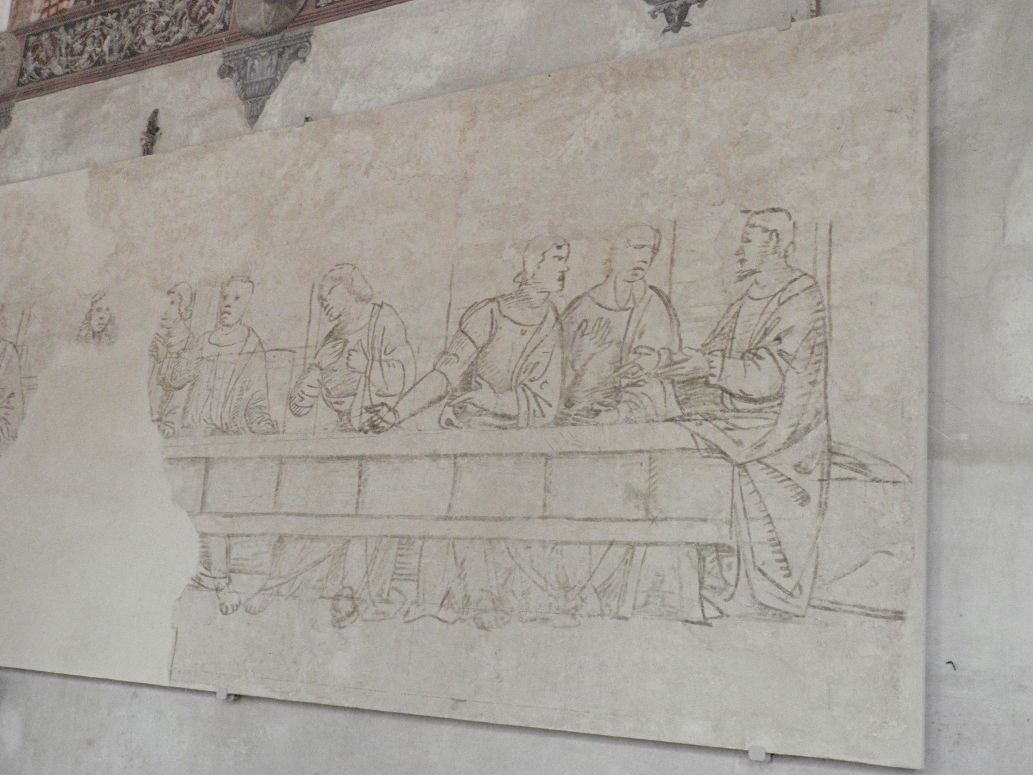
Opposite the museum is the mysterious late Baroque style Palazzo Bondenti Terni de’ Gregory. Its mystery lies in that only one side of the palace was completed. The Palazzo was commissioned in the late seventeenth century by the Counts Bondenti. The four statues built in soft stone on the wall date from 1716 celebrate the Bondenti family.
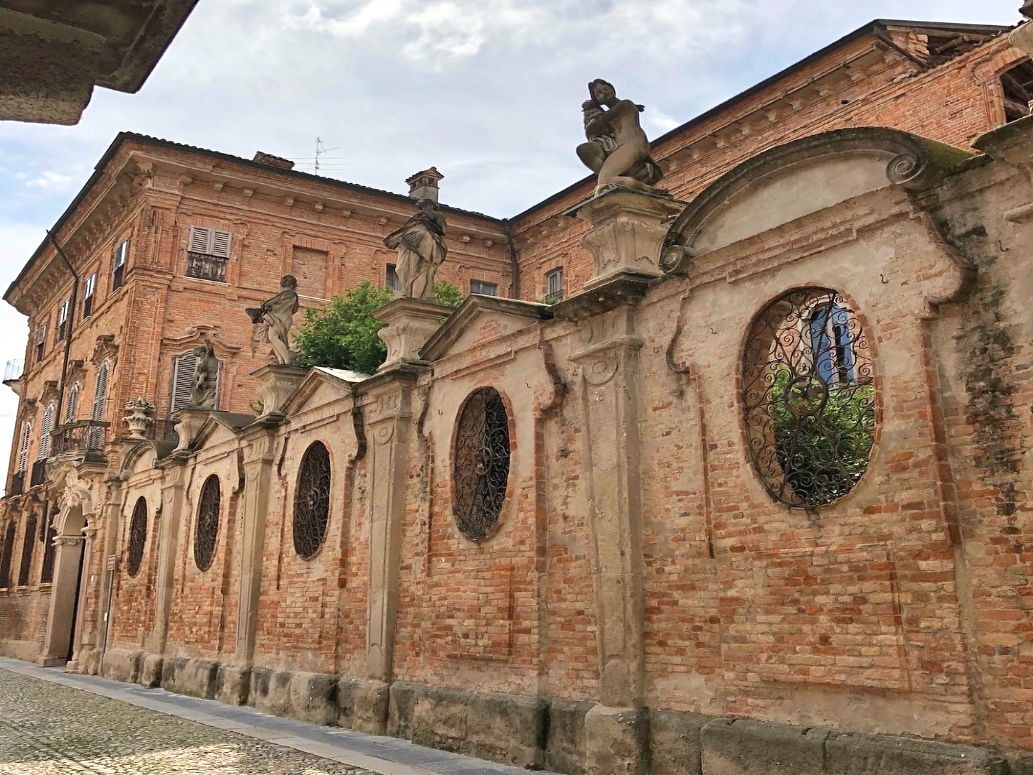
To walk off my big lunch, I continued to wander around Crema for the rest of the afternoon admiring its beautiful terracotta architecture and Baroque churches.
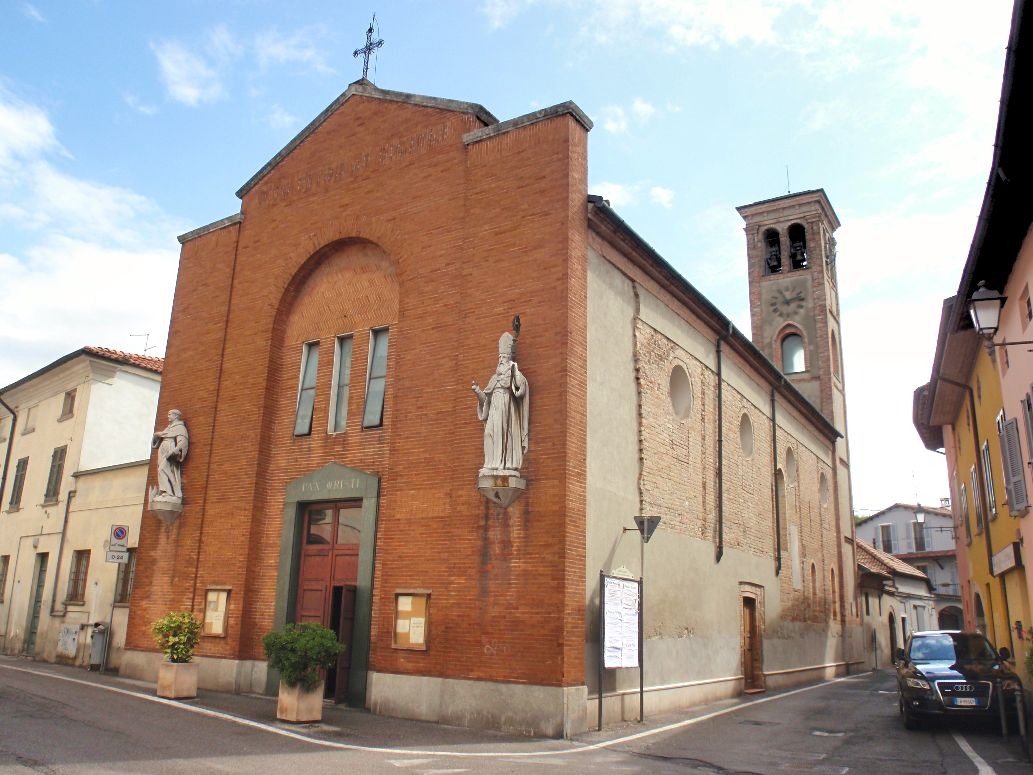
Before calling it a day I had time for one final Crema culinary treat, a gelato at Ice Cream near the Porta Ombriano.
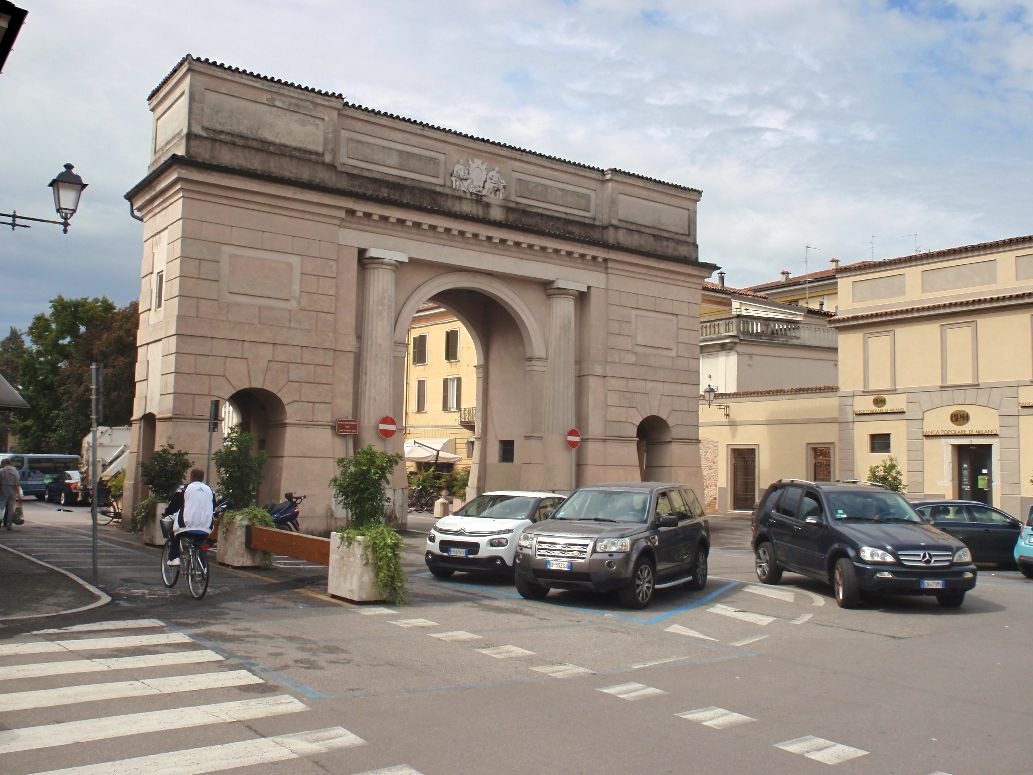
Crema is well worth a visit and can easily be visited as a day trip from Milan. Further towns to explore in the area include Cremona, Lodi, and Piacenza.

